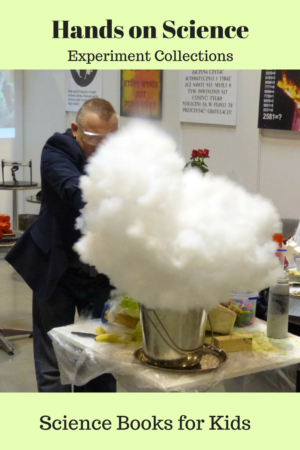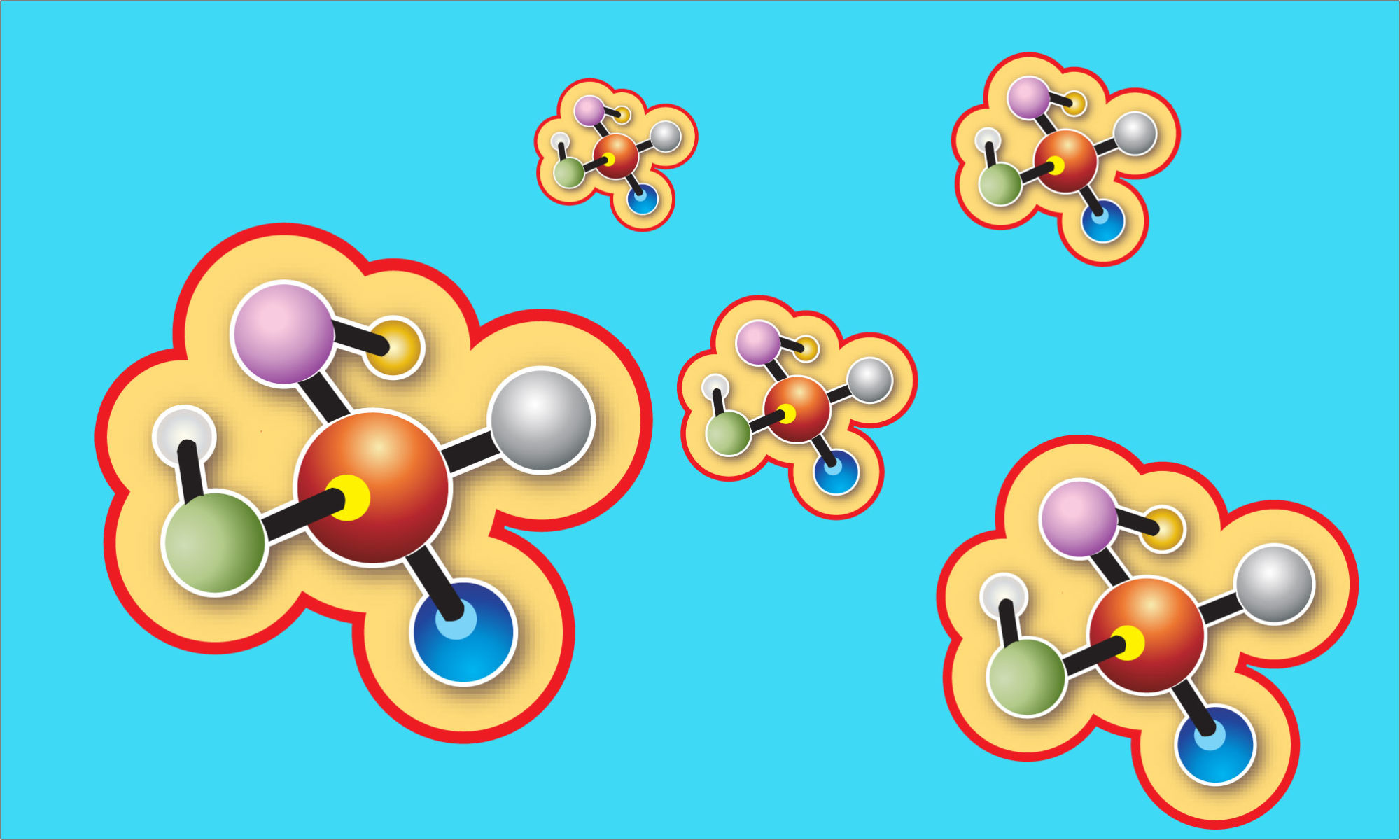For busy parent and educators, books with collections of science activities or experiments can be a real life saver. With clear step-by-step instructions and using easy to obtain materials, children can often take the lead with these projects.
 (This post contains Amazon affiliate links.)
(This post contains Amazon affiliate links.)
Here are a few to consider having on hand for rainy days and long weekends:
The Kitchen Pantry Scientist Physics for Kids: Science Experiments and Activities Inspired by Awesome Physicists, Past and Present by Liz Lee Heinecke and illustrated by Kelly Anne Dalton
Liz Heinecke is the force of nature behind the Kitchen Pantry Scientist blog/website where she offers hands-on activities for kids (Go check it out!)
Now she has a series of books that offer the same fun, educational hands-on STEM organized by topic. In this title, Heinecke introduces young readers to 25 famous physicists though short but comprehensive bios, then encourages them to explore the featured physicists’ work through related hands-on experiments. For example, kids learn about Galileo and then play with pendulums. She has included a diverse group of modern scientists as well, like Christine Darden.
Combining information about the history of physics with hands-on experiments is sure to inspire the next generation of great scientists. Brilliant!
Reading age : 6 – 12 years
Publisher : Quarry Books; Illustrated edition (February 8, 2022)
ISBN-10 : 0760372438
ISBN-13 : 978-0760372432
The Kitchen Pantry Scientist Chemistry for Kids: Science Experiments and Activities Inspired by Awesome Chemists, Past and Present by Liz Lee Heinecke and illustrated by Kelly Anne Dalton
Another in the Kitchen Pantry Scientist series (see description above), this one features 25 chemists.
This book is getting a lot of well-deserved attention:
* 2021 AAAS/Subaru SB&F Prize for Excellence in Science Books in Middle Grade Longlist
* 2021 NSTA-CBC Outstanding Science Trade Book
* 2021 EUREKA! Nonfiction Children’s Honor Book
Reading age : 7 – 12 years
Publisher : Quarry Books; Illustrated edition (May 5, 2020)
ISBN-10 : 1631598309
ISBN-13 : 978-1631598302
The following titles are by one of my favorite publishers, Chicago Review Press. They specialize in hands-on learning for kids.
Junk Drawer Ecology: 50 Awesome Experiments That Don’t Cost a Thing by Bobby Mercer
High school Physics teacher Bobby Mercer has organized instructions for 50 activities into 4 general categories: “Reduce, Reuse, and Recycle”, “Animals and Plants”, “Water and Land”, and “Air.” Each activity has a brief summary of the project and the ecology concepts it covers. Next is a list of the materials needed “From the Junk Drawer.” Once you have gathered the materials, the instructions are given step by step, illustrated with black and white photographs.
Many of the activities in Junk Drawer Ecology could also be extended and expanded to follow a child’s interests. Using inexpensive household items to do hands-on science that has potential to grow with the child? It doesn’t get any better than this.
Reading age : 9 – 12 years
Publisher : Chicago Review Press (December 14, 2021)
Paperback : 262 pages
ISBN-10 : 1641605499
ISBN-13 : 978-1641605496
Here is an older title from the same Junk Drawer Science series:
Junk Drawer Physics: 50 Awesome Experiments That Don’t Cost a Thing by Bobby Mercer mixes step-by-step instructions for experiments (over 50!) with sidebars of intriguing physics facts.
Similar to the Ecology title in format, this book features 50 hands-on activities to thrill your budding physicist.
Age Range: 9 and up
Publisher: Chicago Review Press (June 1, 2014)
ISBN-10: 1613749201
ISBN-13: 978-1613749203
Try This Extreme: 50 Fun & Safe Experiments for the Mad Scientist in You by Karen Romano Young and photographs by Matthew Rakola
What is extreme about this book? It explores extreme temperatures (for example, the effect of cold on glow sticks and freezing bubbles), extreme environments (test survival skills) , and extreme animal abilities (for example, exploring the insulating power of whale blubber). Super cool!
2018 AAAS Subaru Children’s Science Book Prize Finalist
Age Range: 10 and up
Publisher: National Geographic Children’s Books (September 26, 2017)
ISBN-10: 142632863X
ISBN-13: 978-1426328633
Cool Plastic Bottle and Milk Jug Science (Recycled Science) by Tammy Enz.
Tammy Enz has come up with nine intriguing science activities that reuse plastic containers. It’s a win-win scenario because plastic containers provide inexpensive containers for science projects, and finding new purposes for water bottles or milk jugs keeps them out of the landfill.
The instructions for the activities are short and clear. There’s a list of materials you’ll need, step-by-step instructions how to put it together, photographs showing the set up, and a brief explanation of what’s happening. Activities range from making a cloud in a bottle in a few minutes to a longer term composting worm farm.
Cool Plastic Bottle and Milk Jug Science is perfect for a busy educator who needs a science activity fast. The best part is the materials are inexpensive and generally readily available. If you are doing science with kids, it’s a great book to have on hand.
See related activities at Growing with Science blog.
Age Range: 8 – 14 years
Publisher: Capstone Press (August 1, 2016)
ISBN-10: 1515708624
ISBN-13: 978-1515708629
Big Science for Little People: 52 Activities to Help You and Your Child Discover the Wonders of Science (An Official Geek Mama Guide) by Lynn Brunelle
With 52 activities to chose from, you are sure to find one that will get children excited about science.
Examples:
1. The Exploding Lunch Bag: Will you get out of the way before the vinegar and baking soda react with a fizzy burst?
2. Seed Hunt: Seek out whirly, sticky, and smooth seeds for a science-filled outdoor adventure!
3. The Marshmallow Launcher: Harness energy to fling sugary treats in the name of science.
Age Range: 4 – 8 years
Publisher: Roost Books (September 20, 2016)
ISBN-10: 1611803500
ISBN-13: 978-1611803501
Edible Science: Experiments You Can Eat (Science & Nature) by Jodi Wheeler-Toppen and Carol Tennant
Kitchen science experiments are always a hit. Yum!
Age Range: 8 – 12 years
Publisher: National Geographic Children’s Books (September 8, 2015)
ISBN-10: 1426321112
ISBN-13: 978-1426321115
Gardening Lab for Kids: 52 Fun Experiments to Learn, Grow, Harvest, Make, Play, and Enjoy Your Garden (Hands-On Family) by Renata Brown
The term “experiments” in the subtitle might suggest scientific trials or investigations, but for this book “experiment” is actually used more in the sense of “to try something new.” Gardening Lab for Kids is a lovely collection of hands-on activities for children to do for every week of the year, from designing a garden and making seed tape, to planting a garden in a shoe, growing a pizza garden, and constructing a wind chime. In addition, children will certainly learn some science as they explore parts of plants, investigate soils, try out composting, and learn about watering.
Age Range: 5 – 12 years
Publisher: Quarry Books (April 1, 2014)
ISBN-10: 1592539041
ISBN-13: 978-1592539048
The Kid’s Guide to Exploring Nature (BBG Guides for a Greener Planet) by (none less than) the Brooklyn Botanic Garden Educators and illustrated by László Veres i
This title is both an identification guide and nature activity book. The activities are organized by season (list of activity titles here). It also includes career profiles of some modern-day naturalists.
Age Range: 8 – 12 years
Publisher: Brooklyn Botanic Garden (August 5, 2014)
ISBN-10: 1889538884
ISBN-13: 978-1889538884
Explore Gravity!: With 25 Great Projects (Explore Your World series)
by Cindy Blobaum and illustrated by Bryan Stone
A children’s project book that helps budding physicists learn about why gravity is important and how it works. The best part is that it is filled with hands on projects that can be done with easy-to-obtain objects, mostly from around the house.
Reviewed in full at Growing with Science blog
Age Range: 7 – 9 years
Publisher: Nomad Press (November 1, 2013)
ISBN-10: 1619302071
ISBN-13: 978-1619302075
Science Fair Winners: Junkyard Science: 20 projects and experiments about junk, garbage, waste, things we don’t need any more, and ways to recycle or reuse it-or lose it by Karen Romano Young and illustrated by David Goldin
Junkyard Science has “workshops” ranging from comparing batteries, to investigating the ingredients in a diaper, to looking at trash in space. Each experiment/activity has the potential to be helpful for the environment, as well as to be expanded into a nifty science fair project.
Ages: 9-12
Paperback: 80 pages
Publisher: National Geographic Children’s Books (September 28, 2010)
ISBN-10: 142630689X
ISBN-13: 978-1426306891
Gadgetology: Kitchen Fun with Your Kids, Using 35 Cooking Gadgets for Simple Recipes, Crafts, Games, and Experiments by Pam Abrams
Go full STEAM ahead with a mixture of kitchen science and crafts.This collection emphasizes the use of kitchen gadgets, which should thrill budding engineers.
Age Range: 9 – 12 years
Publisher: Harvard Common Press (March 15, 2007)
ISBN-10: 1558323465
ISBN-13: 978-1558323469
Build It: Invent New Structures and Contraptions (Invent It) by Tammy Enz
Author Enz is a civil engineer, and her experience shows in the details in each of the projects. Included are instructions on how to make a device that can open an close a door remotely (with strings), a newspaper fort, a trash grabber, toothpick bridge, a pet waterer and many more. Each project comes with a list of materials and step-by-step instructions with color photographs accompanying each step.
In additions to the projects, sidebars are sprinkled throughout that reveal some historically-important inventions. Did you know the can opener was invented 48 years after the invention of the tin can? Amazing!
Build It: Invent New Structures and Contraptions would be great for a busy teacher looking for a quick science or engineering project because it has complete and detailed plans. It would also be fun for the home inventor who could build the project as presented and then use the skills he or she learned to tweak the design or come with up with a whole new invention.
My previous review and activities.
Reading level: 3-4
Publisher: Capstone Press (January 1, 2012)
ISBN-10: 1429679816
ISBN-13: 978-1429679817
Nature Science Experiments: What’s Hopping in a Dust Bunny? (Mad Science) by Sudipta Bardhan-Quallen and illustrated by Edward Miller
Neat, clearly written experiments on a variety of topics. The dust mite and one-celled life experiments assume the reader has access to a microscope.
Age Range: 9 – 12 years
Publisher: Sterling (May 4, 2010)
ISBN-10: 1402724128
ISBN-13: 978-1402724121
The Book of Potentially Catastrophic Science: 50 Experiments for Daring Young Scientists by Sean Connolly
Won the 2011 AAAS/Subaru SB&F Prizes for Excellence in Science Books in the hands-on science category. Excellent collection.
Publisher: Workman Publishing Company (May 5, 2010)
ISBN-10: 0761156879
ISBN-13: 978-0761156871
Junior Scientists: Experiments with Seeds by Susan H. Gray
Directions for three simple science experiments with seeds that use common household ingredients. Addresses questions such as whether seeds need air to grow or whether roots always grow down. Best for grades 2-3
Publisher: Cherry Lake Publishing (August 2010)
ISBN-10: 1602798931
ISBN-13: 978-1602798939
Science Experiments That Fizz and Bubble: Fun Projects for Curious Kids by Jodi Wheeler-Toppen
Directions for eleven science projects that can be done easily at home, with readily available products. Examples are making orange “soda” with orange juice and baking soda. Each project ends with “Why It Works” to explain the science behind the activity.
Age Range: 8 – 14 years
Publisher: Capstone Press (December 1, 2010)
ISBN-10: 1429654252
ISBN-13: 978-1429654258
_____________________________
Do you have any suggestions for this list? Please let us know.




















We planted sunflowers for the first time this year. I was amazed at how many bees there were on each flower. I believe that the one out front had 5 or 6 bees on it at one time.
Thanks for all the great links.
I didn’t know bees liked sunflowers so much. I’m planning to try to grow some for the birds and our mice. What kind(s) did you plant?